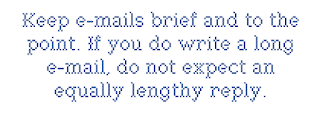Sound Observations (9/2)
I had put together a sound piece for one of our classes last semester with sounds from the city, so for this assignment I decided to focus on the even smaller sounds going on around my apartment that I normally don't notice. When I accidentally hit one of my glasses on the side of my sink, it inspired me to get all of the cups, glasses, and mugs out of my cabinet and explore the different sounds I could make tapping them against each other and against other objects in my kitchen. I recorded each type of glass separately and then copy and pasted them to form beats. I also recorded my cabinet closing to use as a steady beat as well as the sink faucet running. These sorts of sounds, especially dropping things or accidentally knocking things against each other are sounds we don't normally appreciate as sound.
I think sound is really useful in the classroom because of this reason: it encourages students to really listen to what's around them and isolate their sense of hearing. So often our world is dominated by the visual, so having to remove that and close your eyes to just appreciate sound is an interesting exercise. Sound projects can teach students to appreciate the mundane sounds around them. Last semester, our Processes and Structures class made a soundscape of New York City. Everyone recorded sounds on their phone of their commute to or from Teachers College. We then put together sounds such as subway announcements, buses, elevators beeping, and doors opening and closing to create a soundscape that gave off the feeling of everyday life in a chaotic but musical city. We then used the sound piece to make a giant, collaborative class art piece for our exhibition. In this way, we started with sound and then moved back to traditional media to visually complement what we were hearing, so sound can be used to tie into many other lessons and projects.
I also really like the idea of making your own instruments, and I think an art teacher could collaborate with a music teacher so that students can use their knowledge in both arts disciplines to inform their work.
I think sound is really useful in the classroom because of this reason: it encourages students to really listen to what's around them and isolate their sense of hearing. So often our world is dominated by the visual, so having to remove that and close your eyes to just appreciate sound is an interesting exercise. Sound projects can teach students to appreciate the mundane sounds around them. Last semester, our Processes and Structures class made a soundscape of New York City. Everyone recorded sounds on their phone of their commute to or from Teachers College. We then put together sounds such as subway announcements, buses, elevators beeping, and doors opening and closing to create a soundscape that gave off the feeling of everyday life in a chaotic but musical city. We then used the sound piece to make a giant, collaborative class art piece for our exhibition. In this way, we started with sound and then moved back to traditional media to visually complement what we were hearing, so sound can be used to tie into many other lessons and projects.
I also really like the idea of making your own instruments, and I think an art teacher could collaborate with a music teacher so that students can use their knowledge in both arts disciplines to inform their work.

Comments
Post a Comment